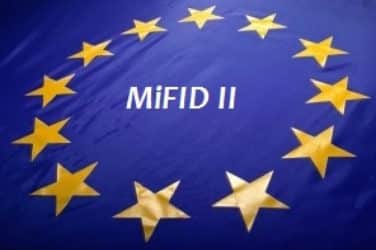Research billing and the unbundling dilemma – why US firms must pay close attention ahead of MiFID II implementation
By Daniel Carpenter, MiFID II Lead at Meritsoft

Daniel Carpenter, Meritsoft
Weeks after CFTC Commissioner Sharon Bowen strongly endorsed U.S. adoption of MiFID II rules, American financial institutions are beginning to slowly realize that a paradigm shift is coming to the trading world in the way of investor protection. The days of ‘soft dollaring,’ the practice that allows for fund managers to pay executing brokers for research through trading fees, may very soon come to an end, though the practice has slowly been falling out of favor in recent years. The end of CSAs, or Commission Sharing Agreements is just one of the ways that increased transparency may come to the U.S. market with the implementation of MiFID II on January 3, 2018.
Come January, American firms doing business in Europe or with European clients will have to do more than ever to prove that they are getting investors the best deals. And that means saying goodbye to the cost of research being directly funded through trading commissions.
Some of the largest U.S.-based asset managers have already decided to cough up research costs from their own P&L. However, not all houses have decided on this approach, so it by no means signals an end to the research billing and commissions saga. On the contrary, significant implications as a result of a broker’s business are likely to be felt long beyond January 3rd. As fund managers begin budgeting and assessing research value, brokers are still left fielding the first wave of questions such as, “when and how am I going to be charged?” and “what exactly am I going to be paying?” The second wave of questions, such as, “Are all research providers invoicing in a standard pricing approach, standard format and frequency?” have not even yet arisen.
While those in equities research may be used to these questions (albeit with minimal contracts and invoices managed retrospectively and manually), Fixed Income, Currency and Commodity (FICC) intermediaries are on less familiar ground. You can already hear the cries from the research sales desk of, “I have never had to charge for this before, how do I go about recording and enforcing these agreements?”
Previously, FICC research was subsidized by the bank, who knew they were getting some revenue from trading. They now need to find a way to manage large numbers of global and regional research contracts and agreements, not to mention budgets and invoicing in regional currencies which will need to be converted to the base currency for global client servicing. All of this leads to a mountain of contractual paperwork and tracking of interactions.
However, even if the sell-side gets to grips with research, the problem starts to get really thorny when attempting to figure out how CSA agreements tie into creating eligible research pots, where permissible. Can the interplay be seen as an inducement – trading commission splits versus research spend? The problem is, under MiFID II, the number of counterparty agreements is set to increase tenfold. It is, therefore, much harder to create and manage CSA agreements and link to the right research buckets.
As a case in point, banks are anticipating the number of both Research and CSA agreements shooting up from the hundreds to the thousands over the next six months. Apart from the obvious administration workload and cost implications, why does this matter? Firms may need to provide clients with very intricate trading and research interaction details for buy-side reconciliation. In order to meet the requirement, they must show when and what specific rate cards were agreed upon – not to mention, a copy of the rate cards/fee structure and a signed agreement (although some institutions are establishing that verbal agreements are sufficient), which must also be auditable for good measure. All of this means that the sell-side needs to find a way to manage multiple agreements, rate cards across different markets and regions, numerous instrument types and various service offerings. Try doing this successfully with the old fashioned manual spreadsheet approach.
With so much to consider, is it really realistic to think that the big sell-side houses will get their client contractual negotiations and agreements sorted in just four months? Whether it is new audit trails for proving that the best client advice was provided, or the huge increase in processes that need to be automated, brokers and banks still have plenty to ponder. So, while January 3rd may well be the date everyone is currently working night and day towards, when it comes to MiFID II Research and CSAs, one can’t help but feel that the real work is yet to begin.
To remain the world’s most attractive investment market, the U.S. must double its efforts to improve its data transparency and commit itself to acting in end clients’ best interests. The world is moving in the same direction, and the U.S. must comply, or risk falling behind.




